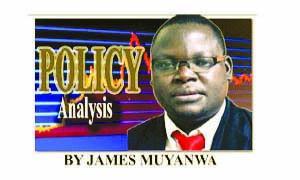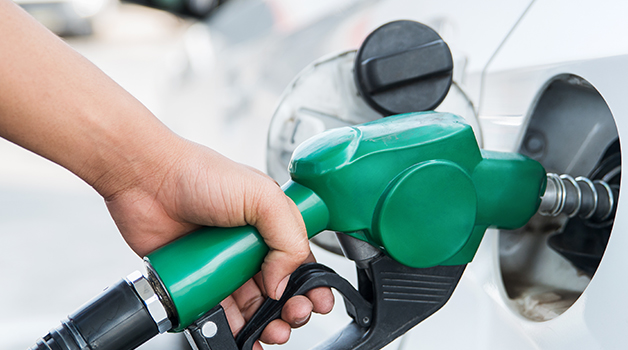FOLLOWING a series of write-ups on the prices of petroleum products in Zambia, this forum has received some feedbacks from some consumers trying to find out if there is any possibility of having prices reduced.
Some want me to speculate whether the prices will go up or down during the next monthly price review by the Energy Regulation Board (ERB) expected on April 29.
Others say there is no way the ERB can increase the pump prices this month given the rate of increase last month-end.
From the readers’ comments it is evident that there is need to, once more, look at the petroleum product pricing mechanism and the current policy governing that.
In so doing, this column looks at what exactly makes up the fuel pump prices.
This is critical since there is an endeavour to move towards the cost-reflective pricing mechanism.
Providentially, the ERB organised a media workshop on the subject about a fortnight ago.
It is important to note that, currently, Zambia has not yet discovered crude oil reserves locally and, therefore, imports 100 per cent of its fuel needs.
It imports finished products of its fuel requirement following the decision to do away with Indeni Petroleum Refinery which refined the imported comingled crude oil.
At that time Indeni supplied 40 per cent of Zambia’s fuel requirement while 60 per cent was imported directly by Government contracted suppliers as petrol and diesel and other products.
The Government has come up with reforms on restructuring the petroleum sub-sector under which, Indeni has been placed on care and maintenance while Tanzania Zambia Mafuta (TAZAMA) Pipelines will be converted into a pipeline to transport finished petroleum products and not crude.
ERB manager economic regulation – fossil fuels, Lungowe Lutangu says currently, all of the country’s petroleum product requirements are met by imports of finished products by Government contracted suppliers and Oil Marketing Companies (OMCs).
Mr Lutangu said in his presentation during the workshop that currently, the procurement of petroleum products is done through the Ministry of Energy using an international/local tender process.
There are eight Government contracted suppliers of finished petroleum products.
Currently, petroleum price reviews are held every 30 days in line with the new Government policy.
The ERB uses the Cost Plus Model (CPM) to determine wholesale and pump prices.
Obviously, our main interest is on how ERB arrives at the retail or pump prices and not so much on the wholesale prices.
The CPM entails that the final petroleum prices should cover all the costs incurred in the supply chain.
According to Mr Lutangu, the final fuel prices determined by the CPM are required to recover total cost per unit of purchasing the imported petroleum products, transporting, wholesaling, distributing and retailing.
Generally, like the retail price for any other imported product, the fuel pump price is influenced by three main factors to start with.
The actual International prices of crude oil and finished petroleum products per barrel at the time of transaction, the local exchange rate in relation to the dollar and the transport cost.
Up to this level most of the factors are global but the transport cost, apart from the distance, is also dependent on the choices or options of the importers on the modes and routes.
Locally, other elements like taxes, fees and levies are also added to the price to arrive at the final pump price per litre.
These are local factors which differ from one country to another depending on the government policies.
In Zambia currently, there are about eight different local elements which add to the landing cost of the fuel to make up the pump prices.
These are terminal fees, marking fees, excise duty inclusive of road levy, local transport cost, OMC margin, dealer margin, ERB fees and the strategic reserve fund fee.
In terms of the actual rate according to ERB, the terminal fee is charged at K0.063 per litre, while the marking fee is K0.10 per litre and transport cost at K0.52 per litre for both petrol and diesel.
Further, the OMC margin is pegged at K1.58 per litre, while the dealer margin is at K1.07 per litre for both petrol and diesel with ERB fees pegged at 0.7 per cent and a K0.15-per-litre strategic reserves fund fee.
In terms of taxes, the government charges K0.64 for petrol as excise duty and nothing for diesel and kerosene.
The K0.64 excise duty on petrol is a reduction on the K2.70 the government was supposed to charge.
Currently, there is a waiver on the 16 per cent Value Added Tax and on 25 per cent input duty on all the petroleum products.
The aggregate of these waivers and reductions in taxes is about K6.44 per litre for petrol that the government forgoes.
For diesel the amount foregone by the government per litre is K4.96.
Apart from the market conditions triggered by global happenings like the prices of crude oil and fuel on the international market as well as the performance of the Kwacha in relations to the dollar, the
government move on the waiver will determine the price levels.
For instance, if the government chose to restore all the taxes currently on the waiver, the pump prices would shoot up by K6.44 per litre for petrol and K4.96 per litre for diesel, even if we hold all other factors constant.
Similarly, the government may decide to further remove other local elements constituting the prices like the exercise duty on petrol as well as others and that would lead to marginal pump price reductions, even when other factors are help constant.
But for now the factors to watch are the prices of oil on the international market and the performance of the Kwacha.
The two will determine the new pump prices of fuel in Zambia from April 29 this year.
For comments call: 0955 431442, 0977 246099, 0964 742506 or e-mail: jmuyanwa@gmail.com.








